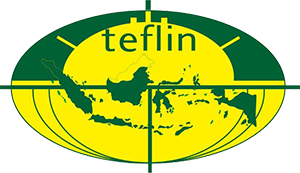Analyzing Lexical Density and Readability of Reading Texts in English Textbook “Stop Bullying Now” by Mahrukh Bashir
Abstract
Keywords
Full Text:
PDFReferences
Ary, D., Jacobs, L. C., Sorensen, C., & Razavieh, A. (2010). Introduction to Research in Education (8th editio). Wadsworth Cengage Learning.
Bailin, A., & Grafstein, A. (2016). Readability: Text and Context (1st editio). Hofstra University.
DuBay, W. H. (2004). The Principles of Readability: A Brief Introduction to Readability Research. In Impact Information. Costa Mesa. http://scholar.google.com/scholar?hl=en&btnG=Search&q=intitle:The+Principles+of+Readability#1
Fathoni, A. (2006). Penelitian dan Tehnik Penyusunan Skripsi. Rineka Cipta.
Graves, K. (2000). Designing Language Courses: A Guide For Teacher (D. Freeman (ed.)). Heinle & Heinle Publisher.
Halliday, M. A. K. (2007). Language and Education (J. J. Webster (ed.)). Continum.
Harmer, J. (1998). How to Teach English. Longman.
Johansson, V. (2008). Lexical diversity and lexical density in speech and writing: a developmental perspective. Lund University, Dept. of Linguistic and Phonetics, Working Papers, 53, 61–79.
Manurung, A., & Sipayung, K. T. (2019). An Analysis LexIcal Density of Reading text in SMA Imelda Medan. JETAL: Journal of English Teaching & Applied Linguistic, 1(1), 41–44. https://doi.org/10.36655/jetal.v1i1.124
McNamara, D. S., Graesser, A. C., McCarthy, P. M., & Cai, Z. (2014). Coh-Metrix Measures of Text Readability and Easability. In Automated Evaluation of Text and Discourse with Coh-Metrix (pp. 78–95). Cambridge University Press. https://doi.org/10.1017/cbo9780511894664.007
Miles, M. B., Huberman, A. M., & Saldana, J. (2014). Qualitative Data Analysis: A Methods Sourcebook. Sage Publication.
Sholichatun, S. (2011). Content Analysis of Reading Materials in English on Sky Textbook for Junior High School. UIN Walisongo.
Stubbs, M. (2002). Words and Phrases: Corpus Studies of Lexical Semantics. Blackwell Publishing.
Syarif, H., & Putri, R. E. (2018). How Lexical Density Reveals Students ’ Ability in Writing Academic Text. Lingua Didaktika, 12(2), 86–94. https://doi.org/10.24036/ld.v12i2.10408
Thida, D. (2019). Lexical Density and Readability of Students ’ Writing. International Journal of Science and Research (IJSR), 8(9), 2018–2020.
Thornbury, S., & Slade, D. (2006). Thornbury and Diana Slade, Conversation: from Description to Pedagogy. UK: Cambridge University Press, 2006. Press, Cambridge University.
To, V., Fan, S., & Thomas, D. (2013). Lexical density and readability: A case study of English textbooks. Internet Journal of Language, Culture and Society, 37(37), 61–71. http://aaref.com.au/en/publications/journal/ ISSN
DOI: http://dx.doi.org/10.21043/jetli.v5i1.12199
Refbacks
- There are currently no refbacks.
Copyright (c) 2022 Journal of English Teaching and Learning Issues







